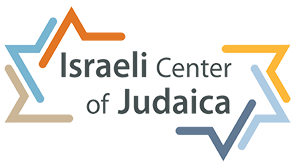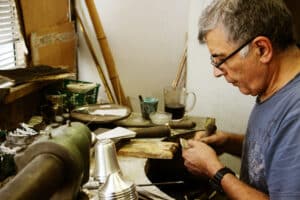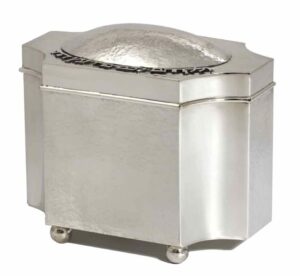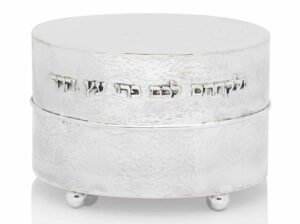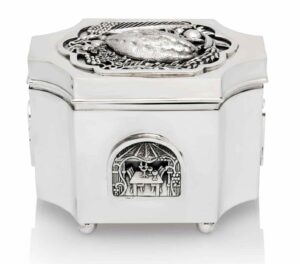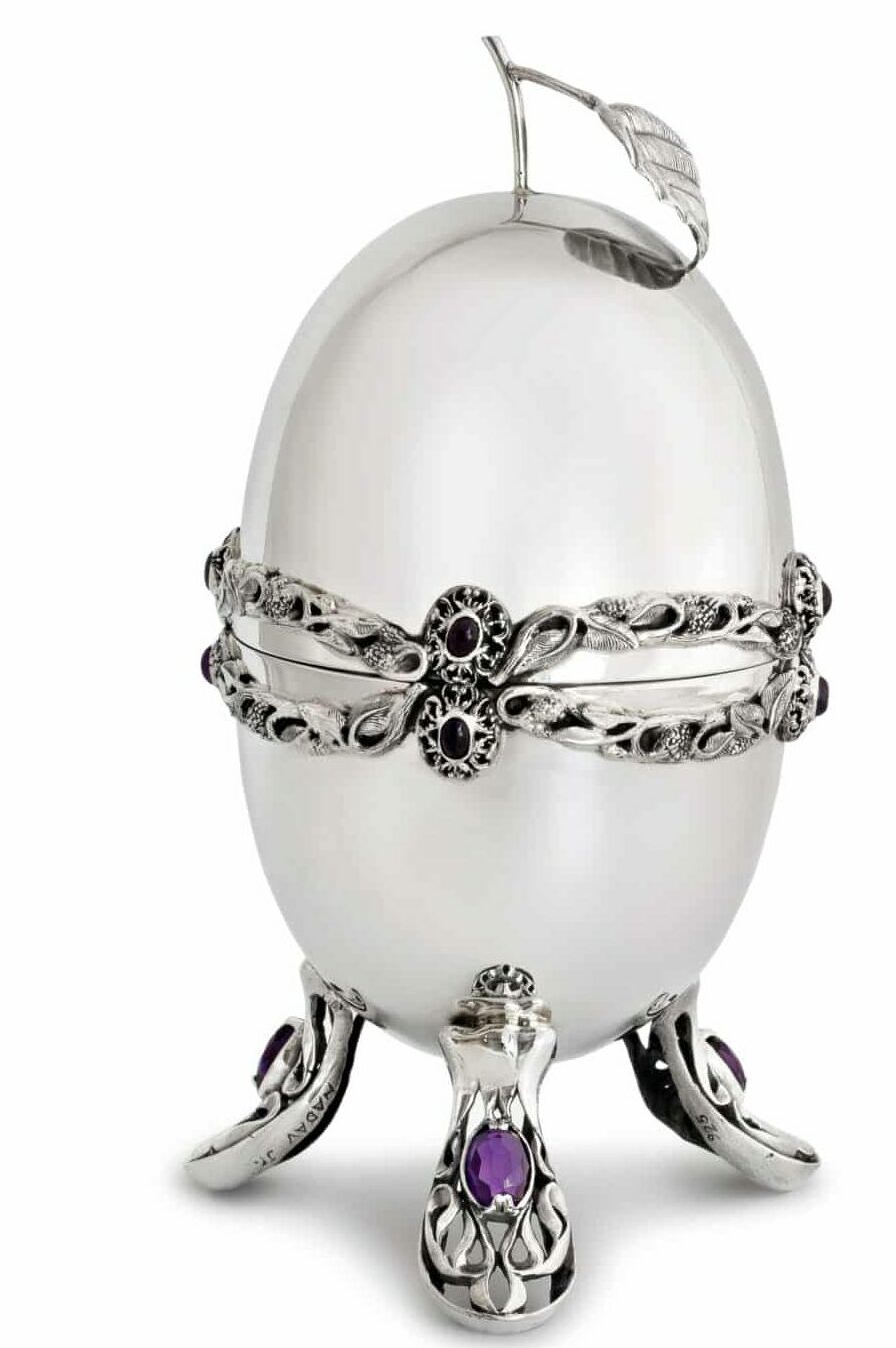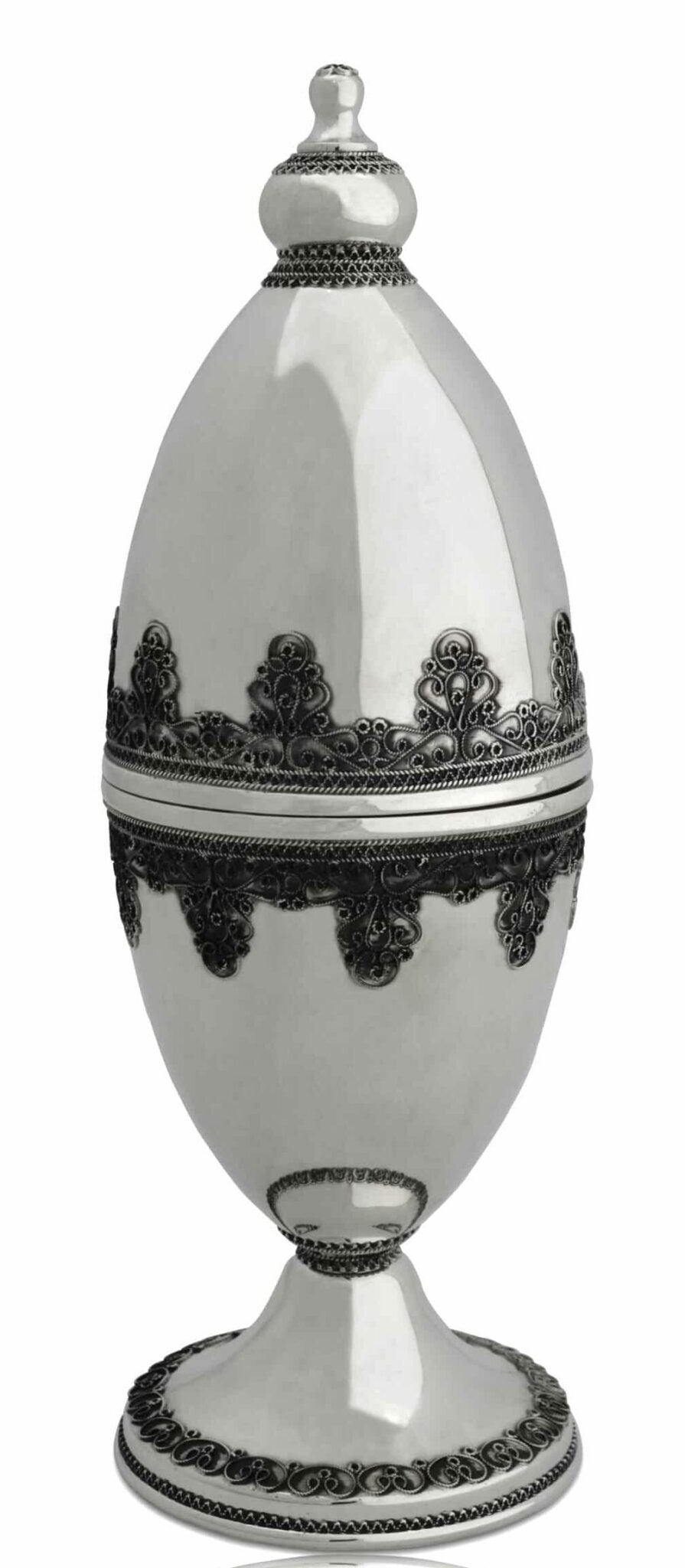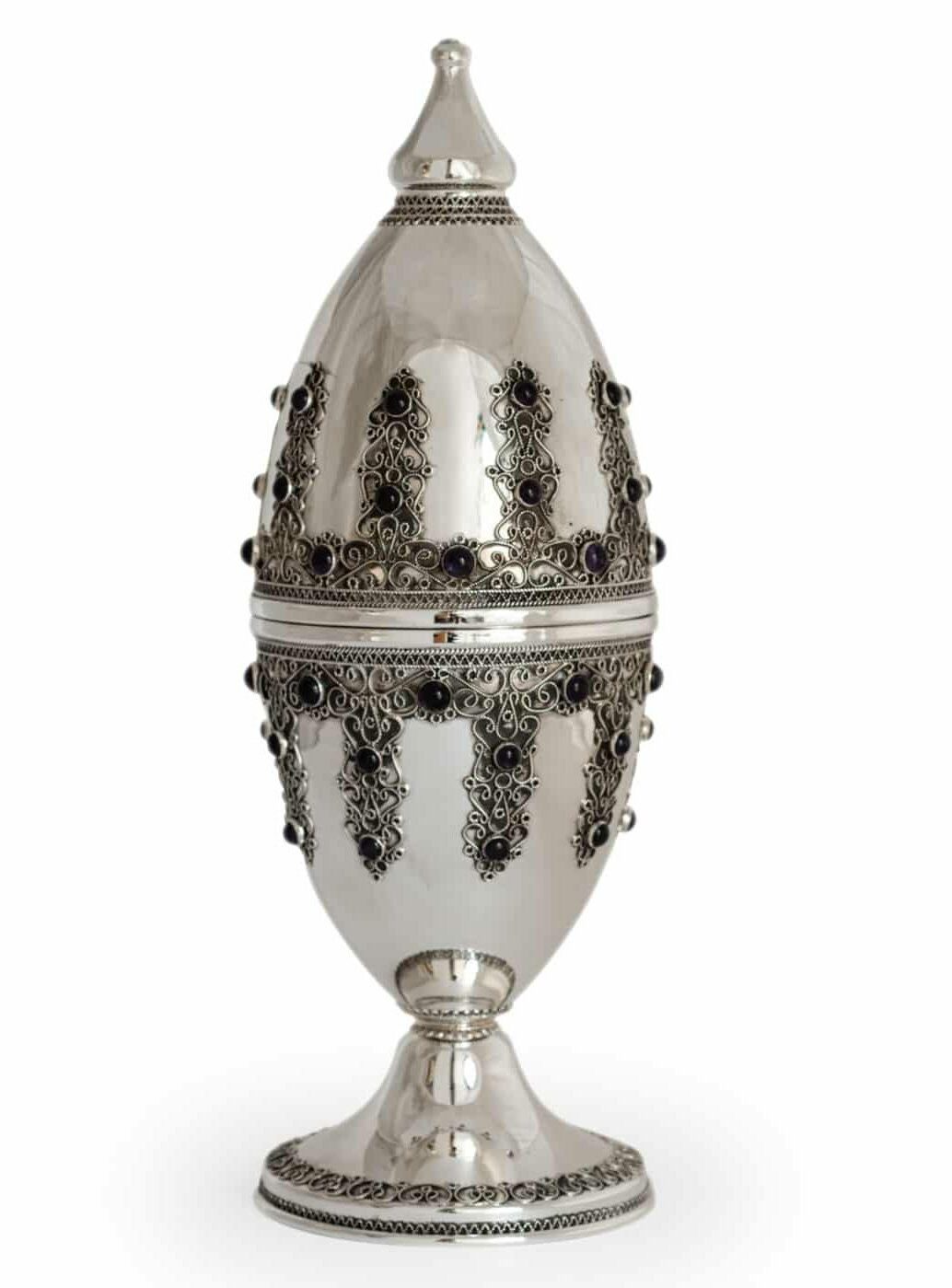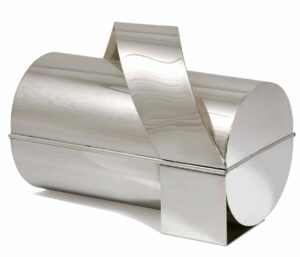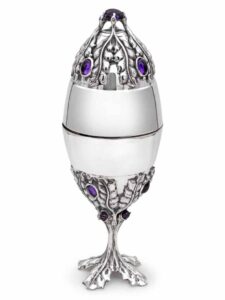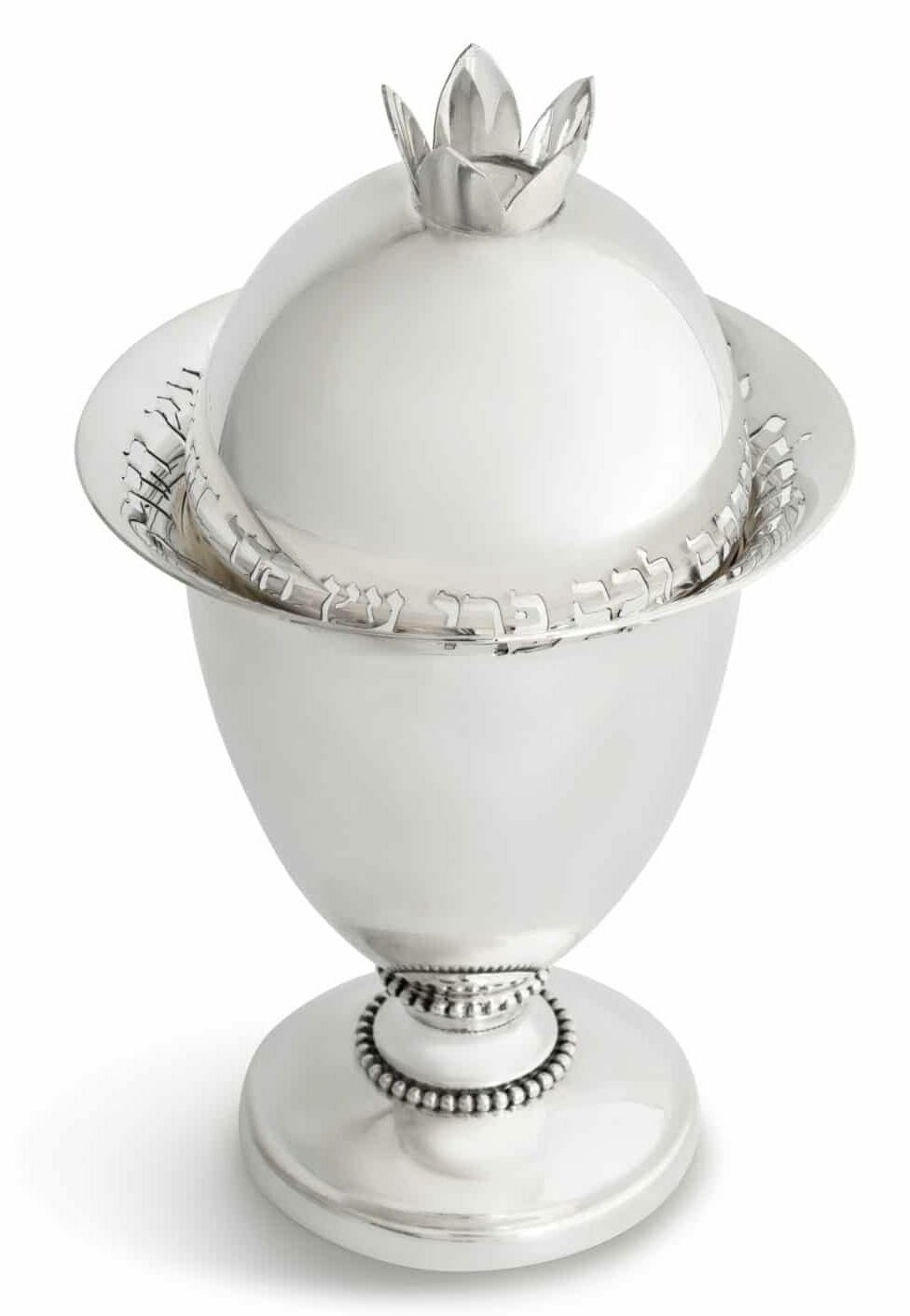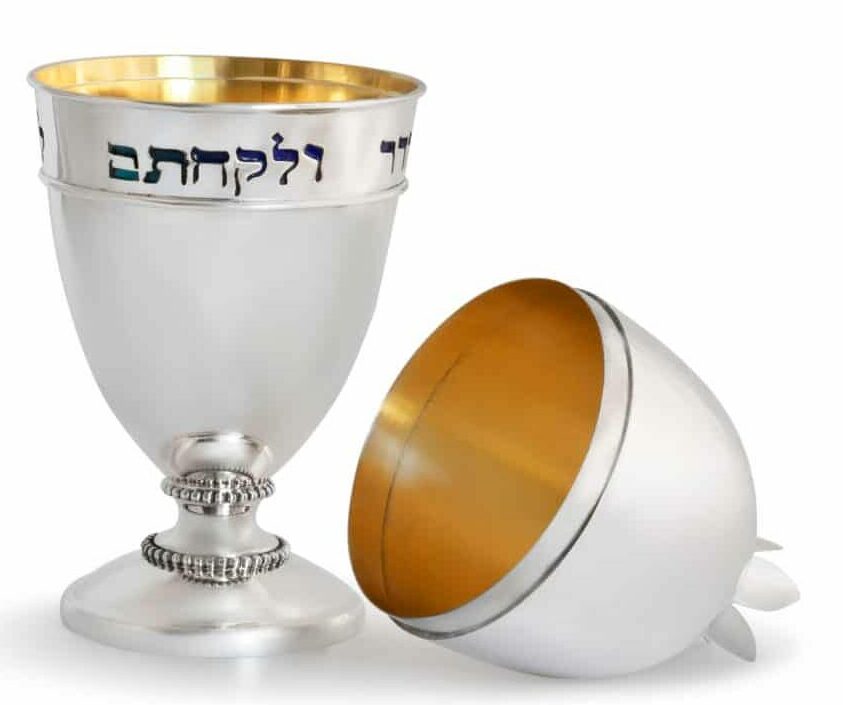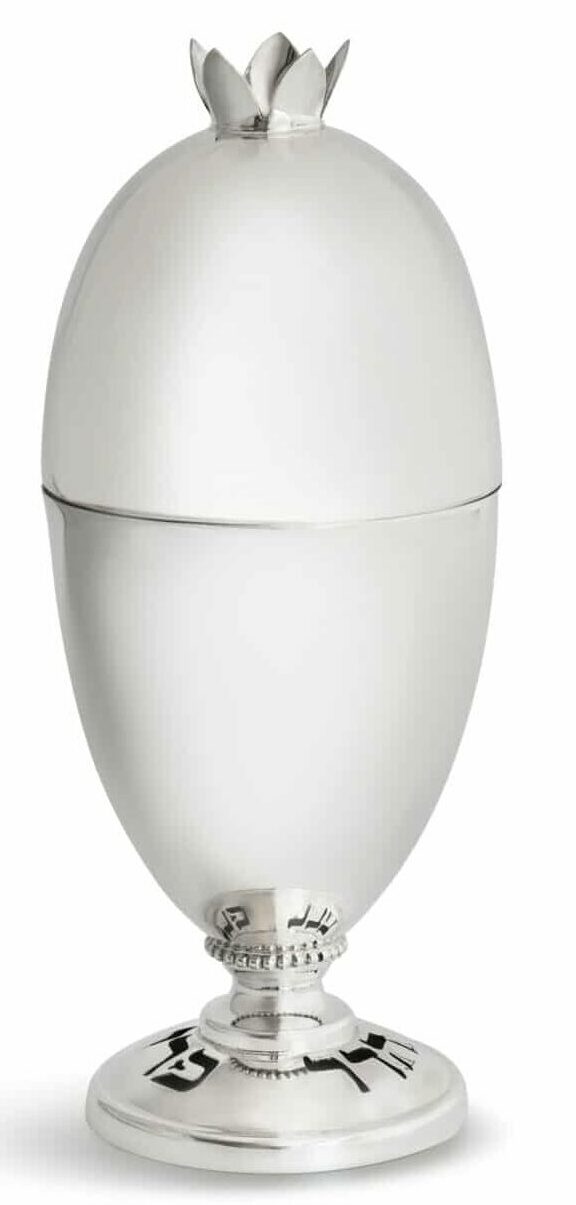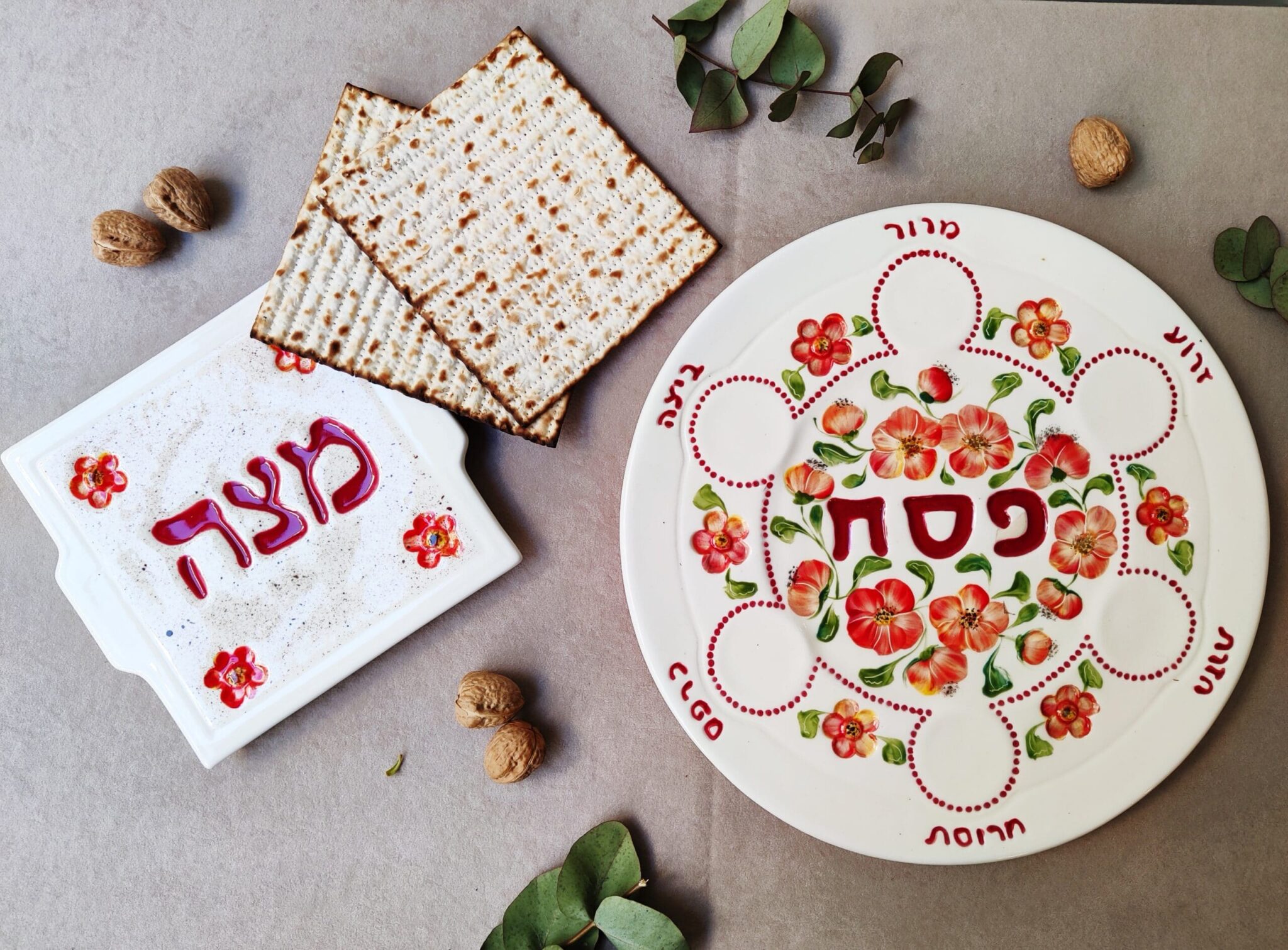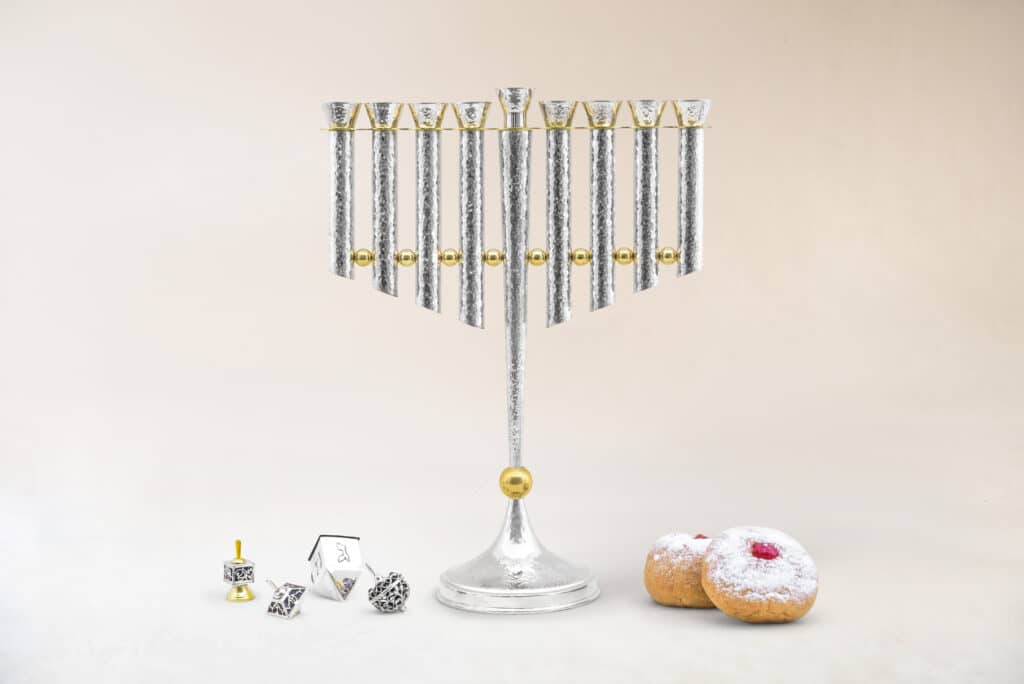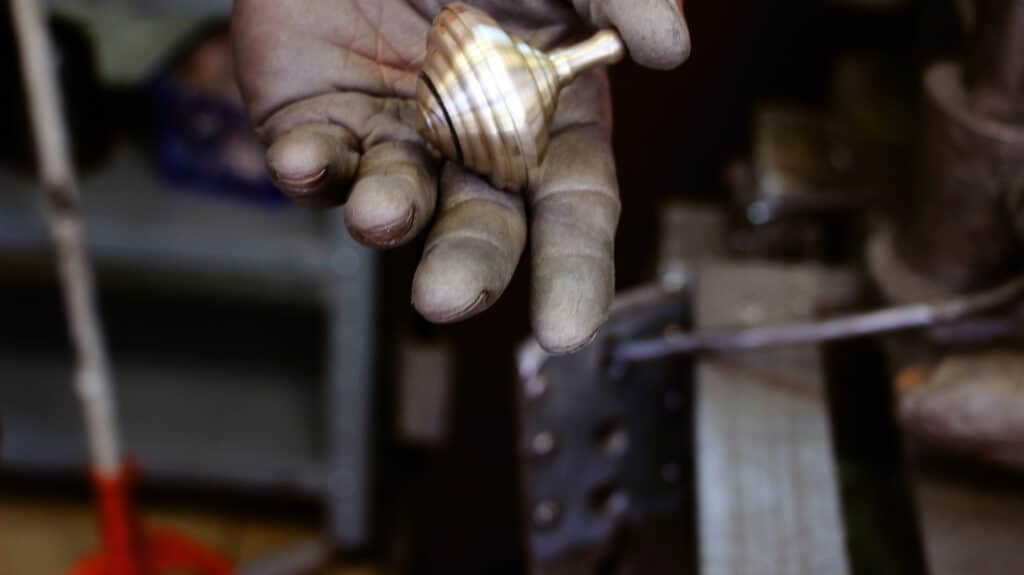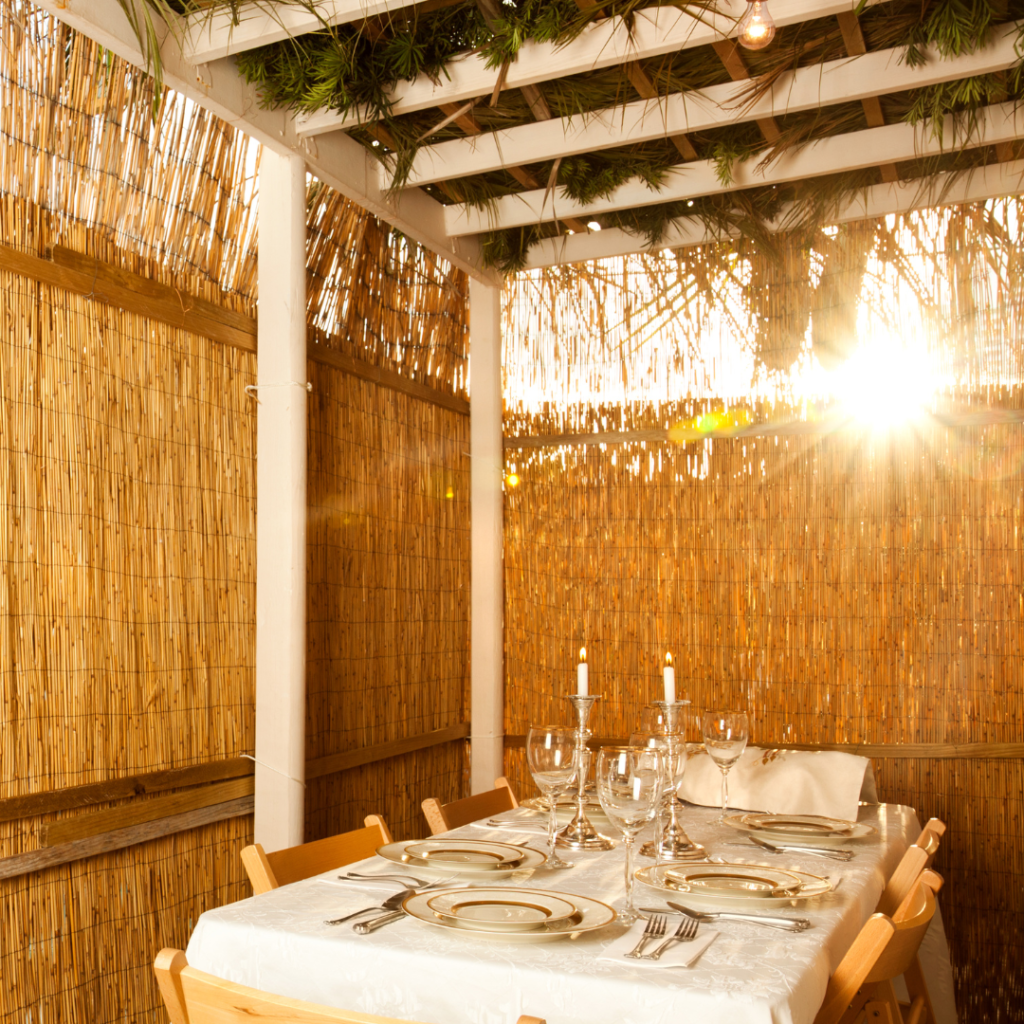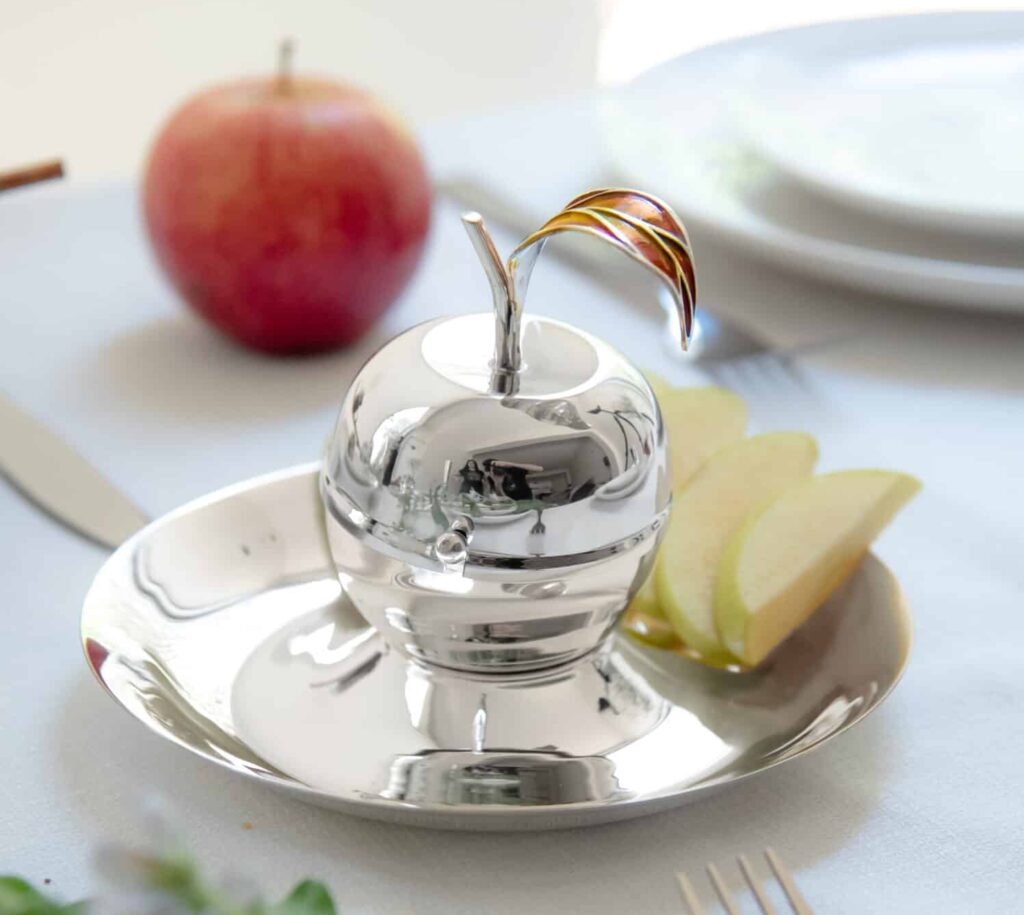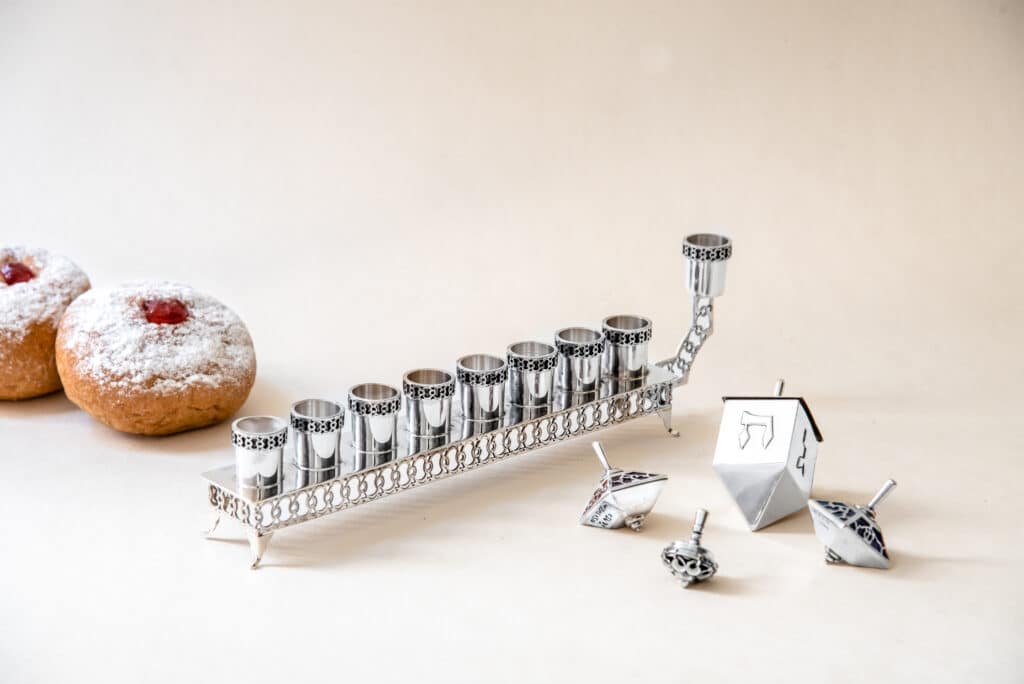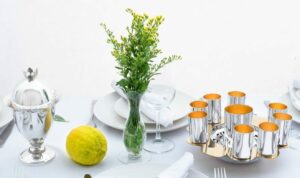
Another important Sukkot custom is bringing out the ‘four species’ and ceremonially waving them in six directions. The best known of the four species is etrog, a yellowish citron fruit that looks a bit like a lemon. Etrog has a special place in Jewish tradition and Jewish craftsmen and artisans have created beautiful handmade etrog boxes for centuries.
We’ll take a closer look at the origin of the Sukkot chag and its wonderful traditions. We’ll also explore the fascinating etrog ritual and what to look for when you buy a Judaica etrog box online. Sukkot is a fun holiday with deep roots in the ancient Middle East and the biblical land of Israel. The 21st century Sukkot rituals preserve an unbroken link to our earliest Jewish ancestors!
To hear this whole article without effort please click the Play button
What is Sukkot?
Sukkot is one of the major Jewish holidays and is mandated by the Torah. It falls between Rosh HaShanah and Hanukkah, although the (modern) calendar date varies every year. Sukkot is an autumn festival and its earliest origins are in the harvest festivals of the ancient Middle East.
Sukkot – Key Facts
- Sukkot is a week-long holiday that begins on the Hebrew date of 15th Tishrei.
- Sukkot is one of the three pilgrimage festivals (shalosh regalim). Ancient Israelites were expected to visit the Temple in Jerusalem on Sukkot, Passover and Shavuot.
- Sukkot is a harvest festival marking the end of the agricultural year.
- Sukkot – סוכות – is also know as Chag HaAsif, Chag HaSukkot, or the Feast of the Tabernacles.
When is Sukkot 2023?
Sukkot 2023 – Hebrew year 5784 – begins on Friday 29th of September at sunset and ends at sunset on Friday 6th of October. Many Israelis will be disappointed that Sukkot 2023 begins and ends on a Friday. The first two days, and final two days of Sukkot are public holidays, but the weekend timings mean that Israelis won’t get any time off work for Sukkot 2023. If people are lucky, they’ll work half days during Chol haMoed (the four middle days of Sukkot).
How do I Celebrate Sukkot?
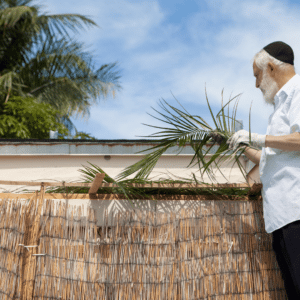
The halakha requires people to sleep and eat in their sukkahs for the duration of Sukkot, but the practice is rarely observed to that extent in modern times. Most modern Jews who build sukkahs will take picnics or evening meals in them. People who have enough space, may even bring out a dining table and chairs and host a full Sukkot dinner in their sukkah. It’s usually kids who make the most of sukkahs, playing at camping in the wilderness.
To see all the variety of our Sukkot products click here
Etrog and the Four Species
The ancient Jewish custom of the four species also reflect the harvest origins and wilderness theme of Sukkot. The four species are etrog, myrtle, willow and palm frond. They are brought out and ceremonially waved in six directions on every day except Shabbat. Etrog is especially interesting because the fruit is also made into jam and other treats. Etrog has other uses as remedies in traditional Jewish folk medicine.
The Four Species – ארבעת המינים – Arbaat haMinim
The Bible (Leviticus 23:40) speaks of the four species in fairly generic terms. The ancient Israelites would have probably made use of locally growing foliage, or it was simply assumed that everybody knew exactly which plants and trees to use.
The Talmud is more specific and defines the four species as:
- Etrog -אתרוג – the fruit of the citron tree
- Hadas – הדס- a leafy myrtle branch
- Willow -ערבה – leafy branches from a willow tree
- Lulav – לולב – a green, closed date palm frond
Why do we use an Etrog Box for Sukkot?
Although all citron fruits may be etrog, not all etrog are considered kosher for Sukkot. An etrog for Sukkot must contain an unbroken pitom (style and stigma) and must not be from a grafted or hybridized tree. Etrog boxes are used to protect harvested etrog fruits and keep all their parts intact.
During previous centuries, and in many parts of the Diaspora today, etrog had to be imported. All citrus fruits were luxury items in cold northern climates, usually arriving by sea from the Mediterranean ports. Etrog that was kosher for Sukkot was a seriously niche product and wasn’t cheap. If you bought etrog, it made sense to take care of it. The traditional way to store etrog was to wrap it carefully in silky flax leaves and keep it in a special box.
The etrog was removed from the box and unwrapped daily during Sukkot. It was used in the ritual, and then replaced in the box. Wealthier Jewish families started to buy handmade silver etrog boxes, and created a new custom. Sterling silver etrog boxes are popular items in modern boutique collections of handmade Judaica. Demand in 2022 is even higher than it was hundreds of years ago when rituals had far more importance.
An etrog box is a classic example of a functional item that generations of Jewish silversmiths have crafted into stunningly beautiful pieces of Judaica. The concept of an etrog box is similar to the idea of a besamim box for havdalah. There’s always been a deep desire to honor basic rituals – or the purpose of the rituals – with precious metals and expert craftsmanship. The Temples in Jerusalem were famed for the beauty and intricate design of their ritual items.
To see all our wide range of Etrog Boxes please click here
Buying Etrog Boxes Online
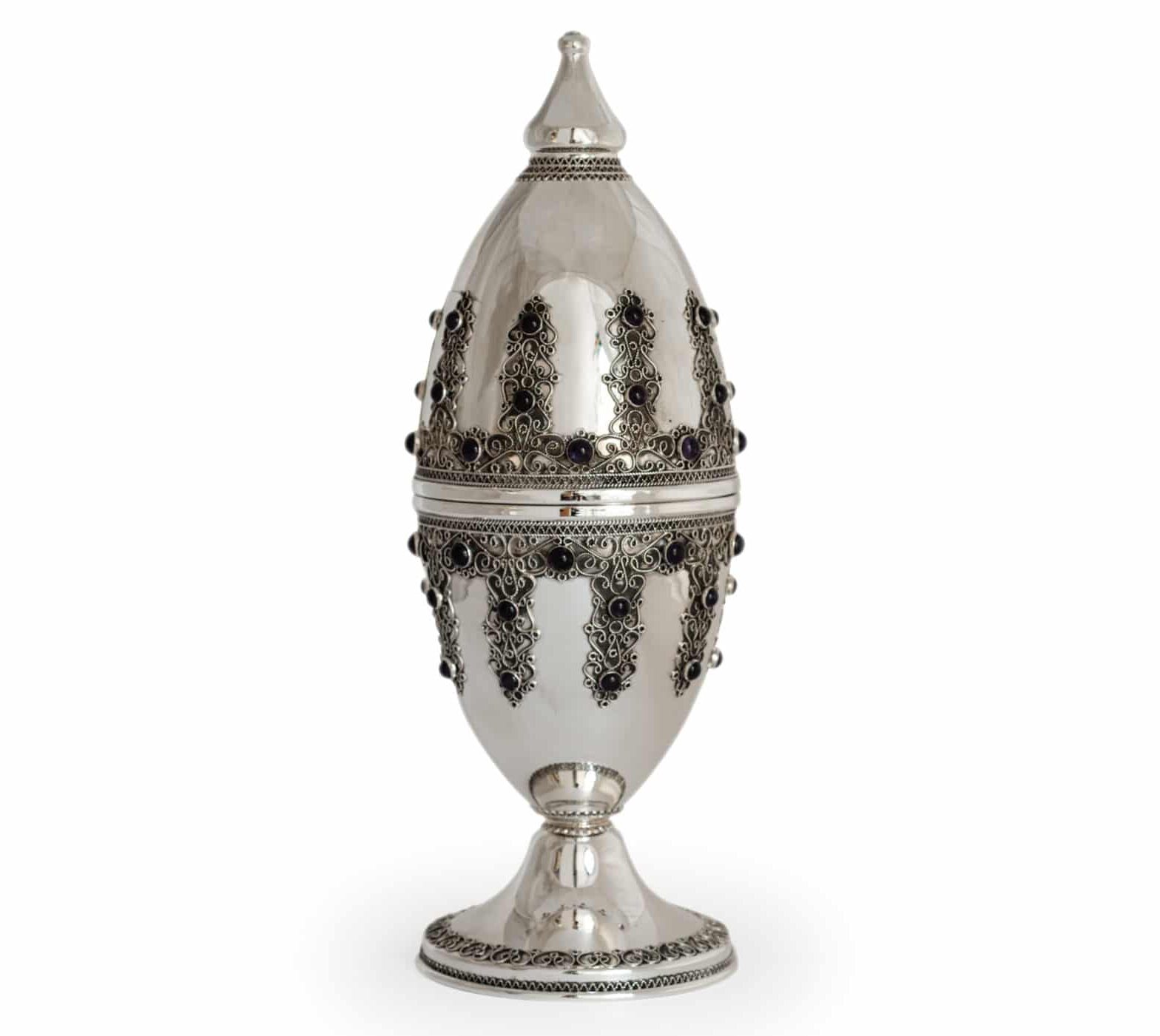
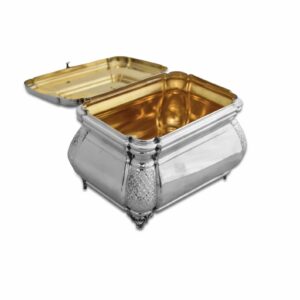
When you buy a handmade etrog box online, you also have a choice of styles. Contemporary etrog box designs usually emphasize the shine of the 925 sterling silver. Decoration tends to be minimalist and may be no more than some bands of silver beading or Hebrew lettering. Sukkot blessings are usually created with silver stamping and colored enamel inlay.
Traditional Sukkot Judaica includes all the decoration and ornamentation that you’d expect from master Jewish craftsmen. Specialities include intricate silver filigree work based on ancient Yemenite skills, and the addition of semi-precious stones and gems like polished Israeli amethysts.
The most luxurious handmade etrog boxes feature Sukkot images like luluv palm fronds, finely wrought from sterling silver. The images are enhanced by skillful use of colored enamel inlay. The interior of each box is then gold plated. These special etrog boxes are works of art and are on a par with anything created by past masters.
How are Silver Etrog Boxes made?
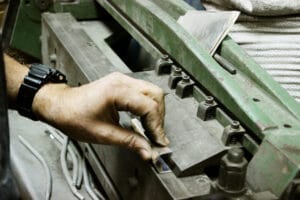
All silver etrog boxes are initially crafted from flat plates of 925 sterling silver bullion. The silver is cut, shaped, heated, hammered, soldered, wrought and teased into the required shape. When the silversmith is happy with the design, proportions and functionality, he transforms the basic box into a true work of art. The decoration and finishing is where we see the true skill – and often the creative genius – of an expert jeweler.
Silver stamping, silver solder, enamel inlay, engraving, gold plating, precious stones, hammer finishes and beading are just techniques and materials. It’s the jeweler’s understanding of proportions, and his ability to create lifelike images, and perfect reproductions of natural materials like leaves and branches that is true art. It’s the artistic input and passion for design that sets the finest Judaica apart from mass produced imitations.
To see all our diversity of sterling silver etrog boxes please click here
Handmade Silver Etrog Boxes by Avi Nadav
One of the most famous Jerusalem silversmiths is Avi Nadav. His handmade Judaica is renowned for its beauty, originality, and perfect functionality. Avi Nadav is a fourth generation artist who draws on his Yemenite Jewish heritage to create wonderful traditional Judaica designs. He also pioneers exciting modern materials like anodized aluminum and loves to explore new mediums and styles.
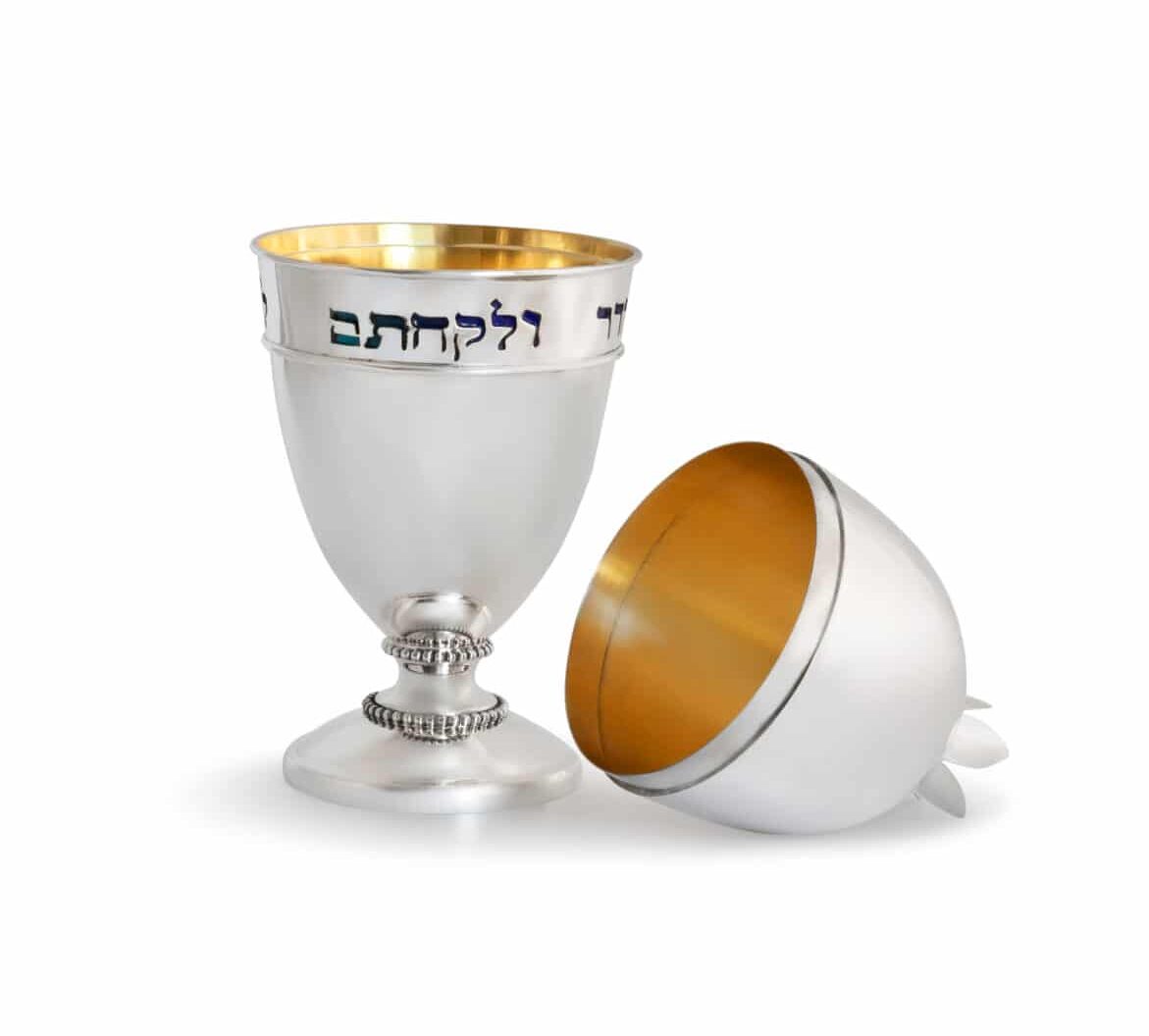
Etrog Boxes by Nissim Badosa
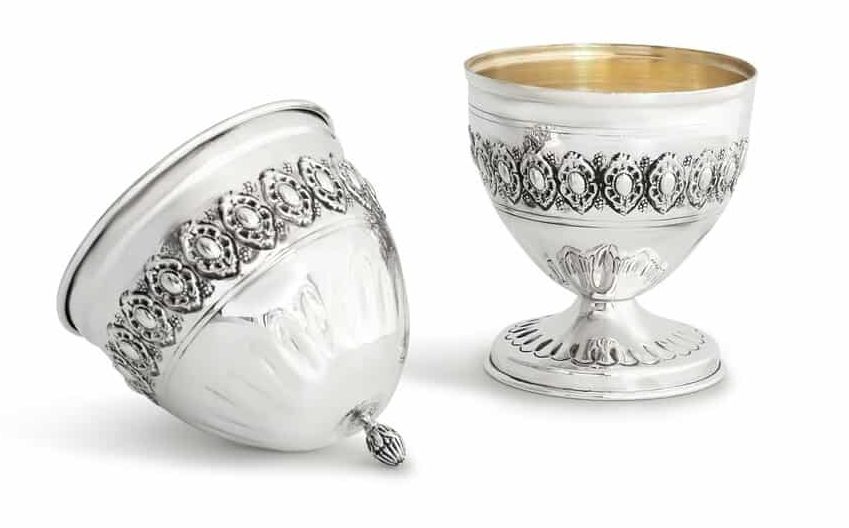
When you buy an etrog box, or any item of Judaica, by Nissim Badosa, you’ll receive a truly elegant piece of designer silverware. Nissim’s Judaica is genuine artwork and will look amazing on any dinner table, or as home decor in almost any home.
Buy Personalized Etrog Boxes Online
A handmade silver etrog box from Jerusalem is a once in a lifetime purchase. If you’re buying as a gift, it’s definitely worth talking to the designers and looking for an original way to personalize your gift. This could include an engraved message or dedication, a blessing, or a personal symbol. Etrog boxes are fairly small items, but ICOJ silversmiths and jewelers have enormous experience and ingenuity when it comes to customizing fine Judaica.
If you want to buy a personalized etrog box online, we’ll be happy to give you a virtual tour of the Jerusalem workshop and show you a range of possibilities. Silver stamping with colored enamel inlay is a popular choice. Silver soldered letters and beading are also usually possible. Some customers love to add birthstones or their names or initials to their new Judaica purchases. If you have a special vision or requirement, you can also commission a unique item of Judaica. Our designers will transform your dream item into reality!
